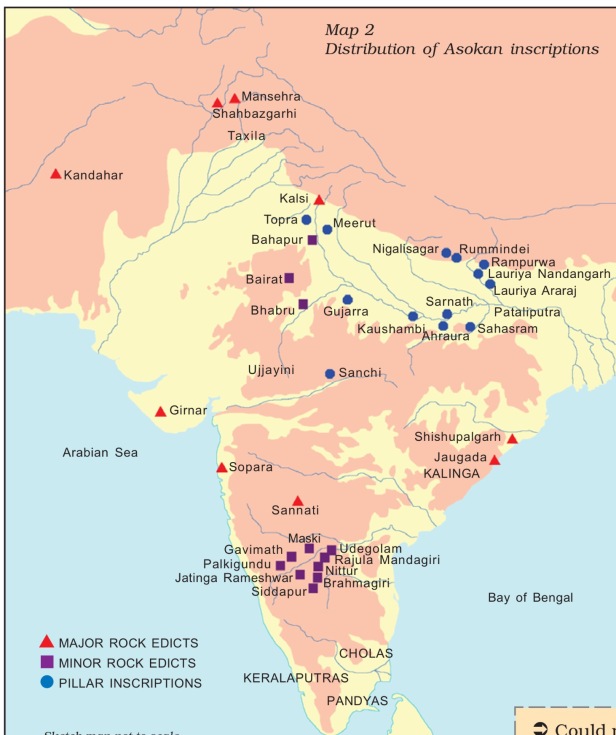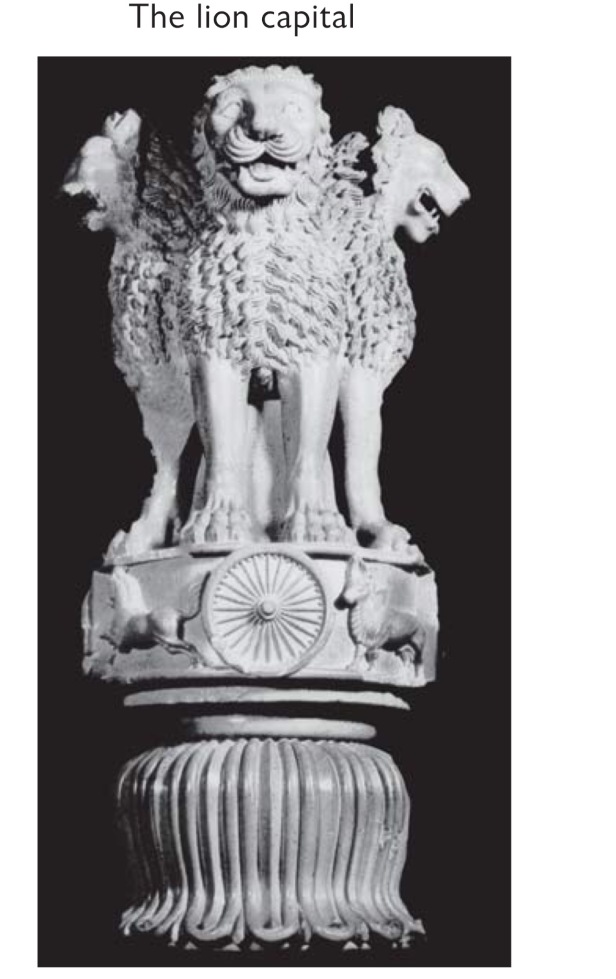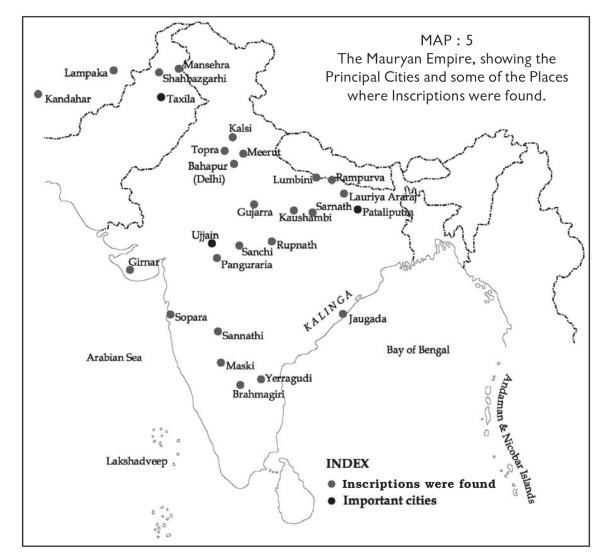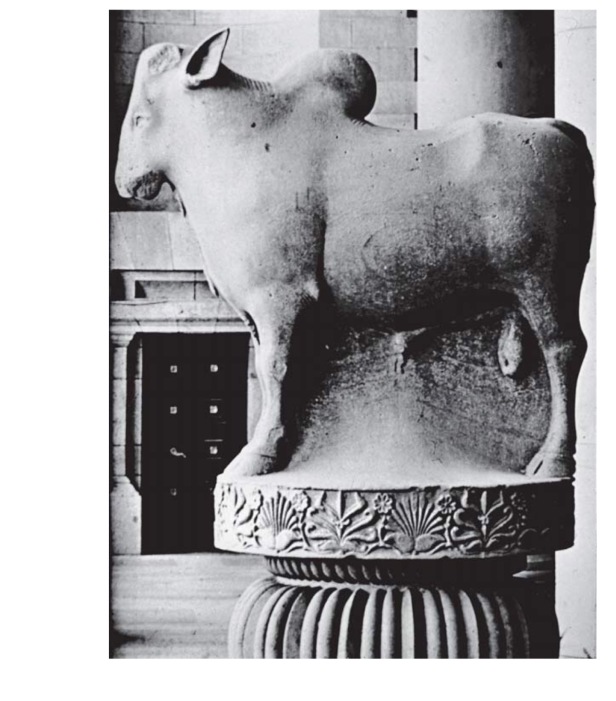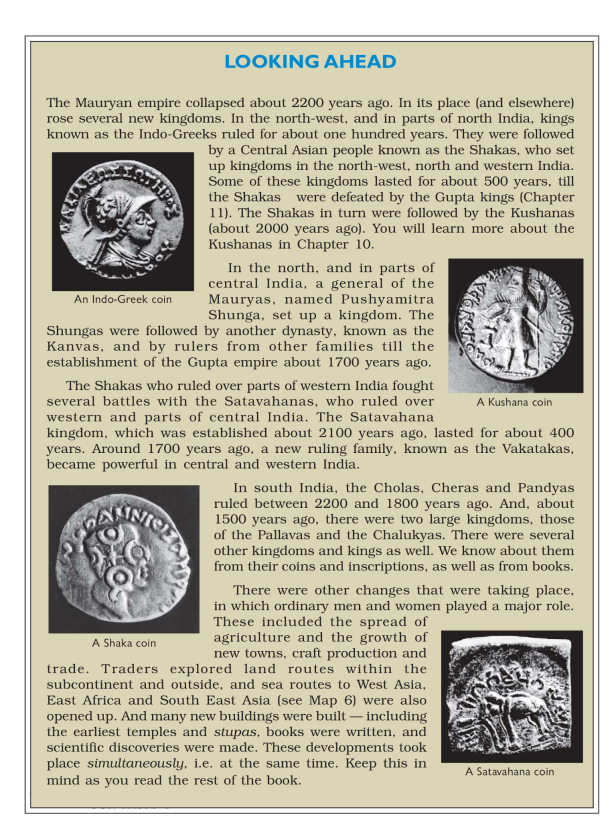Topics
Foundation of the Mauryan Empire,Chandragupta, Kautilya and Arthashastra; Ashoka; Concept of Dhamma ; Edicts; Polity, Administration;Economy; Art, architecture and sculp-ture; External contacts; Religion; Spreadof religion; Literature.Disintegration of the empire; Sungas and Kanvas.
Theory
An Early Empire
The growth of Magadha culminated in the emergence of the Mauryan Empire. Chandragupta Maurya, who founded the empire (c. 321 BCE), extended control as far northwest as Afghanistan and Baluchistan, and his grandson Asoka, arguably the most famous ruler of early India, conquered Kalinga (present-day coastal Orissa).
Finding out about the Mauryas
- Historians have used a variety of sources to reconstruct the history of the Mauryan Empire. These include archaeological finds, especially sculpture.
- Also valuable are contemporary works, such as the account of Megasthenes (a Greek ambassador to the court of Chandragupta Maurya), which survives in fragments.
- Another source that is often used is the Arthashastra, parts of which were probably composed by Kautilya or Chanakya, traditionally believed to be the minister of Chandragupta.
- Besides, the Mauryas are mentioned in later Buddhist, Jaina and Puranic literature, as well as in Sanskrit literary works.
- While these are useful, the inscriptions of Asoka (c. 272/268-231 BCE) on rocks and pillars are often regarded as amongst the most valuable sources.
- Asoka was the first ruler who inscribed his messages to his subjects and officials on stone surfaces – natural rocks as well as polished pillars.
- He used the inscriptions to proclaim what he understood to be dhamma. This included respect towards elders, generosity towards Brahmanas and those who renounced worldly life, treating slaves and servants kindly, and respect for religions and traditions other than one’s own.
Administering the empire
- There were five major political centres in the empire – the capital Pataliputra and the provincial centres of Taxila, Ujjayini, Tosali and Suvarnagiri, all mentioned in Asokan inscriptions.
- If we examine the content of these inscriptions, we find virtually the same message engraved everywhere – from the present-day North West Frontier Provinces of Pakistan, to Andhra Pradesh, Orissa and Uttaranchal in India.
- Could this vast empire have had a uniform administrative system? Historians have increasingly come to realise that this is unlikely. The regions included within the empire were just too diverse. Imagine the contrast between the hilly terrain of Afghanistan and the coast of Orissa.
- It is likely that administrative control was strongest in areas around the capital and the provincial centres. These centres were carefully chosen, both Taxila and Ujjayini being situated on important long-distance trade routes, while Suvarnagiri (literally, the golden mountain) was possibly important for tapping the gold mines of Karnataka.
- Communication along both land and riverine routes was vital for the existence of the empire. Journeys from the centre to the provinces could have taken weeks if not months. This meant arranging for provisions as well as protection for those who were on the move.
- It is obvious that the army was an important means for ensuring the latter. Megasthenes mentions a committee with six subcommittees for coordinating military activity. Of these, one looked after the navy, the second managed transport and provisions, the third was responsible for foot-soldiers, the fourth for horses, the fifth for chariots and the sixth for elephants.
- The activities of the second subcommittee were rather varied: arranging for bullock carts to carry equipment, procuring food for soldiers and fodder for animals, and recruiting servants and artisans to look after the soldiers.
- Asoka also tried to hold his empire together by propagating dhamma, the principles of which were simple and virtually universally applicable. This, according to him, would ensure the well-being of people in this world and the next. Special officers, known as the dhamma mahamatta, were appointed to spread the message of dhamma.
How important was the empire?
- When historians began reconstructing early Indian history in the nineteenth century, the emergence of the Mauryan Empire was regarded as a major landmark. India was then under colonial rule, and was part of the British empire.
- Nineteenth and early twentieth century Indian historians found the possibility that there was an empire in early India both challenging and exciting. Also, some of the archaeological finds associated with the Mauryas, including stone sculpture, were considered to be examples of the spectacular art typical of empires.
- Many of these historians found the message on Asokan inscriptions very different from that of most other rulers, suggesting that Asoka was more powerful and industrious, as also more humble than later rulers who adopted grandiose titles.
- So it is not surprising that nationalist leaders in the twentieth century regarded him as an inspiring figure.
- Yet, how important was the Mauryan Empire? It lasted for about 150 years, which is not a very long time in the vast span of the history of the subcontinent. Besides empire did not encompass the entire subcontinent. And even within the frontiers of the empire, control was not uniform.
- By the second century BCE, new chiefdoms and kingdoms emerged in several parts of the subcontinent.
Languages and scripts
- Most Asokan inscriptions were in the Prakrit language while those in the northwest of the subcontinet were in Aramaic and Greek.
- Most Prakrit inscriptions were written in the Brahmi script; however, some, in the northwest, were written in Kharosthi.
- The Aramaic and Greek scripts were used for inscriptions in Afghanistan.
What the king’s officials did
- Here is an excerpt from the account of Megasthenes: Of the great officers of state, some … superintend the rivers, measure the land, as is done in Egypt, and inspect the sluices by which water is let out from the main canals into their branches, so that every one may have an equal supply of it. The same persons have charge also of the huntsmen, and are entrusted with the power of rewarding or punishing them according to their deserts. They collect the taxes, and superintend the occupations connected with land; as those of the woodcutters, the carpenters, the blacksmiths, and the miners.
Capturing elephants for the army
- The Arthashastra lays down minute details of administrative and military organisation. This is what it says about how to capture elephants: Guards of elephant forests, assisted by those who rear elephants, those who enchain the legs of elephants, those who guard the boundaries, those who live in forests, as well as by those who nurse elephants, shall, with the help of five or seven female elephants to help in tethering wild ones, trace the whereabouts of herds of elephants by following the course of urine and dung left by elephants.
- According to Greek sources, the Mauryan ruler had a standing army of 600,000 foot-soldiers, 30,000 cavalry and 9,000 elephants. Some historians consider these accounts to be exaggerated.
When members of the same family become rulers one after another, the family is often called a dynasty. The Mauryas were a dynasty with three important rulers — Chandragupta, his son Bindusara, and Bindusara’s son, Ashoka.
ASHOKA, THE EMPEROR WHO GAVE UP WAR
- The lions that we see on our notes and coins have a long history. They were carved in stone, and placed on top of a massive stone pillar at Sarnath.
- Ashoka was one of the greatest rulers known to history and on his instructions inscriptions were carved on pillars, as well as on rock surfaces.
- The empire that Ashoka ruled was founded by his grandfather, Chandragupta Maurya, more than 2300 years ago.
- Chandragupta was supported by a wise man named Chanakya or Kautilya. Many of Chanakya’s ideas were written down in a book called the Arthashastra.
- There were several cities in the empire (marked with black dots on the map). These included the capital Pataliputra, Taxila, and Ujjain.
- Taxila was a gateway to the northwest, including Central Asia, while Ujjain lay on the route from north to south India.
- Merchants, officials and crafts persons probably lived in these cities. In other areas there were villages of farmers and herders.
- In some areas such as central India, there were forests where people gathered forest produce and hunted animals for food.
- People in different parts of the empire spoke different languages. They probably ate different kinds of food, and wore different kinds of clothes as well.
How are empires different from kingdoms?
- Emperors need more resources than kings because empires are larger than kingdoms, and need to be protected by big armies.
- So also they need a larger number of officials who collect taxes.
Ruling the empire
- As the empire was so large, different parts were ruled differently. The area around Pataliputra was under the direct control of the emperor. This meant that officials were appointed to collect taxes from farmers, herders, crafts persons and traders, who lived in villages and towns in the area.
- Officials also punished those who disobeyed the ruler’s orders. Many of these officials were given salaries.
- Messengers went to and fro, and spies kept a watch on the officials. And of course the emperor supervised them all, with the help of members of the royal family, and senior ministers.
- There were other areas or provinces. Each of these was ruled from a provincial capital such as Taxila or Ujjain.
- Although there was some amount of control from Pataliputra, and royal princes were often sent as governors, local customs and rules were probably followed.
- Besides, there were vast areas between these centres. Here the Mauryas tried to control roads and rivers, which were important for transport, and to collect whatever resources were available as tax and tribute.
- For example, the Arthashastra tells us that the north-west was important for blankets, and south India for its gold and precious stones. It is possible that these resources were collected as tribute.
- Tribute Unlike taxes, which were collected on a regular basis, tribute was collected as and when it was possible from people who gave a variety of things, more or less willingly.
- There were also the forested regions. People living in these areas were more or less independent, but may have been expected to provide elephants, timber, honey and wax to Mauryan officials.
- The most famous Mauryan ruler was Ashoka. He was the first ruler who tried to take his message to the people through inscriptions. Most of Ashoka’s inscriptions were in Prakrit and were written in the Brahmi script.
The emperor and the capital city
- Megasthenes was an ambassador who was sent to the court of Chandragupta by the Greek ruler of West Asia named Seleucus Nicator.
- Megasthenes wrote an account about what he saw. Here is a part of his description:
“The occasions on which the emperor appears in public are celebrated with grand royal processions. He is carried in a golden palanquin. His guards ride elephants decorated with gold and silver. Some of the guards carry trees on which live birds, including a flock of trained parrots, circle about the head of the emperor. The king is normally surrounded by armed women. He is afraid that someone may try to kill him. He has special servants to taste the food before he eats. He never sleeps in the same bedroom for two nights.” And about Pataliputra (modern Patna) he wrote: “This is a large and beautiful city. It is surrounded by a massive wall. It has 570 towers and 64 gates. The houses, of two and three storeys, are built of wood and mud brick. The king’s palace is also of wood, and decorated with stone carvings. It is surrounded with gardens and enclosures for keeping birds.”
Ashoka’s war in Kalinga
- Kalinga is the ancient name of coastal Orissa. Ashoka fought a war to conquer Kalinga. However, he was so horrified when he saw the violence and bloodshed that he decided not to fight any more wars.
- He is the only king in the history of the world who gave up conquest after winning a war.
Ashoka’s inscription describing the Kalinga war
- This is what Ashoka declared in one of his inscriptions: “Eight years after becoming king I conquered Kalinga. About a lakh and a half people were captured. And more than a lakh of people were killed. This filled me with sorrow. Why? Whenever an independent land is conquered, lakhs of people die, and many are taken prisoner. Brahmins and monks also die. People who are kind to their relatives and friends, to their slaves and servants die, or lose their loved ones. That is why I am sad, and have decided to observe dhamma, and to teach others about it as well. I believe that winning people over through dhamma is much better than conquering them through force. I am inscribing this message for the future, so that my son and grandson after me should not think about war. Instead, they should try to think about how to spread dhamma.”
- ‘Dhamma’ is the Prakrit word for the Sanskrit term ‘Dharma’.
What was Ashoka’s dhamma?
- Ashoka’s dhamma did not involve worship of a god, or performance of a sacrifice. He felt that just as a father tries to teach his children, he had a duty to instruct his subjects.
- He was also inspired by the teachings of the Buddha.There were a number of problems that troubled him.
- People in the empire followed different religions, and this sometimes led to conflict. Animals were sacrificed. Slaves and servants were ill treated. Besides, there were quarrels in families and amongst neighbours.
- Ashoka felt it was his duty to solve these problems. So, he appointed officials, known as the dhamma mahamatta who went from place to place teaching people about dhamma.
- Besides, Ashoka got his messages inscribed on rocks and pillars, instructing his officials to read his message to those who could not read it themselves. Ashoka also sent messengers to spread ideas about dhamma to other lands, such as Syria, Egypt, Greece and Sri Lanka
- He built roads, dug wells, and built rest houses. Besides, he arranged for medical treatment for both human beings and animals.
Ashoka’s messages to his subjects:
“People perform a variety of rituals when they fall ill, when their children get married, when children are born, or when they go on a journey. These rituals are not useful. If instead, people observe other practices, this would be more fruitful. What are these other practices? These are: being gentle with slaves and servants. Respecting one’s elders. Treating all creatures with compassion. Giving gifts to brahmins and monks.” “It is both wrong to praise one’s own religion or criticise another’s. Each one should respect the other’s religion. If one praises one’s own religion while criticising another’s, one is actually doing greater harm to one’s own religion. Therefore, one should try to understand the main ideas of another’s religion, and respect it.”
Pandit Jawaharlal Nehru, the first Prime Minister of India, wrote: “His edicts (instructions) still speak to us in a language we can understand and we can still learn much from them.”
The Rampurwa bull
Look at this finely polished stone sculpture. This was part of a Mauryan pillar found in Rampurwa, Bihar, and has now been placed in Rashtrapati Bhavan. It is an example of the skill of the sculptors of the time.
The Brahmi script
Most modern Indian scripts have developed from the Brahmi script over hundreds of years. Here you can see the letter ‘a’ written in different scripts.
